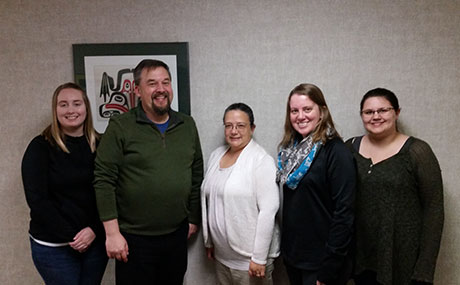 While augmented reality (AR) is often associated with entertainment (think Pokémon GO), an interdepartmental group of BW faculty and students is capitalizing on AR's cutting-edge technology to help speech-language pathology students gain critical skills.
While augmented reality (AR) is often associated with entertainment (think Pokémon GO), an interdepartmental group of BW faculty and students is capitalizing on AR's cutting-edge technology to help speech-language pathology students gain critical skills.
Communication sciences and disorders professor Christie Needham recently presented the results of the faculty-student research project at the American Speech-Language-Hearing Association (ASHA) conference in Los Angeles.
The presentation, titled "Phonetic GO: Using Augmented Reality for Teaching in Speech-Language Pathology," was the result of collaboration between Needham, computer science professor Andrew Watkins and four undergraduate students: Jamie Braden '19 and Katie Geyer '19, communication sciences and disorders majors, and Haley Brown '18 and Katherine Cendrowski '19, computer science majors.
The research is aimed at developing an application to increase International Phonetic Alphabet (IPA) transcription skills through the use of a game-like environment which overlays images on the real world using a computing device, such as a smartphone. This engaging learning tool will assist speech-language pathology students in gaining transcription skills critical to their field.
The project also broadened academic scope and increased experiences for the research team. "Working on this project has helped me understand what is possible for me to do with my major. Now I know what I will be able to do in the future, and the possibilities are exciting," commented Cendrowski.
Watkins added, "Having strong faculty and student collaborations in this project have made it possible to explore new areas of computing that will have a real-world effect. Plus, this project has allowed me to develop strong cross-disciplinary bonds across the BW campus that give me the opportunity to introduce my students to exciting areas of computing they may have never considered before."
"I enjoyed getting to work with members of a different department, learning about their struggles and experiences and drawing on their creativity. It was a great experience to work on an app that solves a real-world problem and will hopefully be helpful to speech-language pathology students in the future," noted Brown.